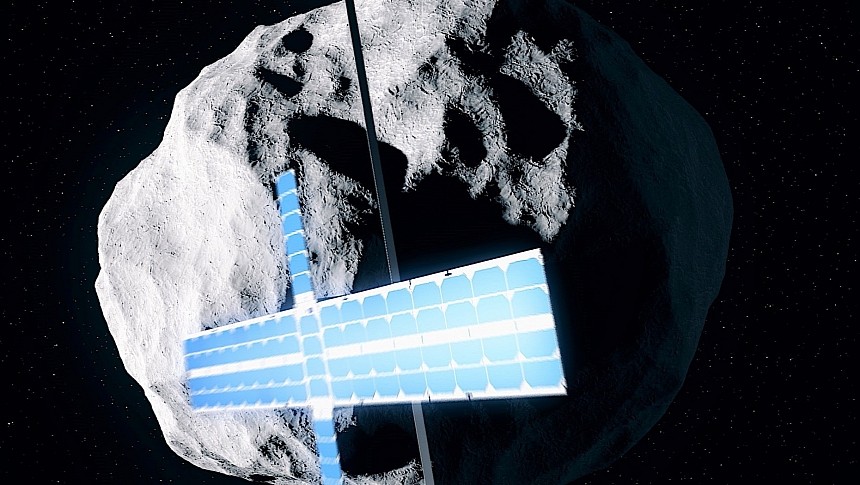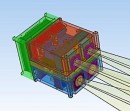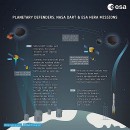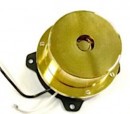Back in 2021 NASA launched the Double Asteroid Redirection Test mission. Known the world over as the DART, it called for a spaceship to impact a distant asteroid at speeds of 14,000 mph (22,530 kph) and see if it could change its course.
There is no way at the moment to measure exactly the full impact the spacecraft had on the asteroid called Dimorphos. The goal of the mission was to see whether our species has the ability to deflect an asteroid that may one day come our way with devastating effects in mind. And as far as we can tell, it proved just that.
After the hit, which occurred in September 2022, measurements taken with instruments located here on Earth and out in space (the James Webb telescope) showed Dimorphos' orbit around its parent asteroid, Didymos, changed by 33 minutes.
The revolution speed of the piece of space rock was altered too, measurements indicating that it slowed down on account of ejecta resulted from the impact - 900,000 kg (almost two million pounds) of dust from the surface of the asteroid were ejected into space at the time of the hit.
The change in orbital speed is barely noticeable, at only 2.7 millimeters per second, but goes to show humans can change orbits of celestial bodies.
Now that NASA has slammed a spacecraft into an asteroid, its peers from over in Europe are planning a mission to the same Dimorphos to take a closer look at what DART did to the place.
The mission is called Hera, and we talked about it before. It's a spacecraft carrying two smaller pieces of hardware, two CubeSats called Milani and Juventas. It's scheduled for departure in 2024, and plans to reach its destination in early 2027 at the latest.
The two CubeSats will be used to perform the world's first-ever radar soundings of an asteroid, but also survey the surface looking for the effects of the impact.
Guven how 2024 is just around the corner, ESA decided to give us an update on where work on the Hera mission is. As per the agency, Milani and Juventas are presently being tested at the space organization's test center in Noordwijk, the Netherlands.
It is there where all aspects of the mission, from the "force and noise of the rocket take-off to the sustained vacuum and temperature extremes of deep space" are being analyzed. You can have a taste of how that is done in the four-minute video attached below this text.
ESA does not say how far along it is with these tests, but it does seem everything is going according to plan, and all are hopeful Hera will make the DART impact a "repeatable planetary defense technique" that may one day save us from space doom.
After the hit, which occurred in September 2022, measurements taken with instruments located here on Earth and out in space (the James Webb telescope) showed Dimorphos' orbit around its parent asteroid, Didymos, changed by 33 minutes.
The revolution speed of the piece of space rock was altered too, measurements indicating that it slowed down on account of ejecta resulted from the impact - 900,000 kg (almost two million pounds) of dust from the surface of the asteroid were ejected into space at the time of the hit.
The change in orbital speed is barely noticeable, at only 2.7 millimeters per second, but goes to show humans can change orbits of celestial bodies.
Now that NASA has slammed a spacecraft into an asteroid, its peers from over in Europe are planning a mission to the same Dimorphos to take a closer look at what DART did to the place.
The mission is called Hera, and we talked about it before. It's a spacecraft carrying two smaller pieces of hardware, two CubeSats called Milani and Juventas. It's scheduled for departure in 2024, and plans to reach its destination in early 2027 at the latest.
The two CubeSats will be used to perform the world's first-ever radar soundings of an asteroid, but also survey the surface looking for the effects of the impact.
Guven how 2024 is just around the corner, ESA decided to give us an update on where work on the Hera mission is. As per the agency, Milani and Juventas are presently being tested at the space organization's test center in Noordwijk, the Netherlands.
It is there where all aspects of the mission, from the "force and noise of the rocket take-off to the sustained vacuum and temperature extremes of deep space" are being analyzed. You can have a taste of how that is done in the four-minute video attached below this text.
ESA does not say how far along it is with these tests, but it does seem everything is going according to plan, and all are hopeful Hera will make the DART impact a "repeatable planetary defense technique" that may one day save us from space doom.












